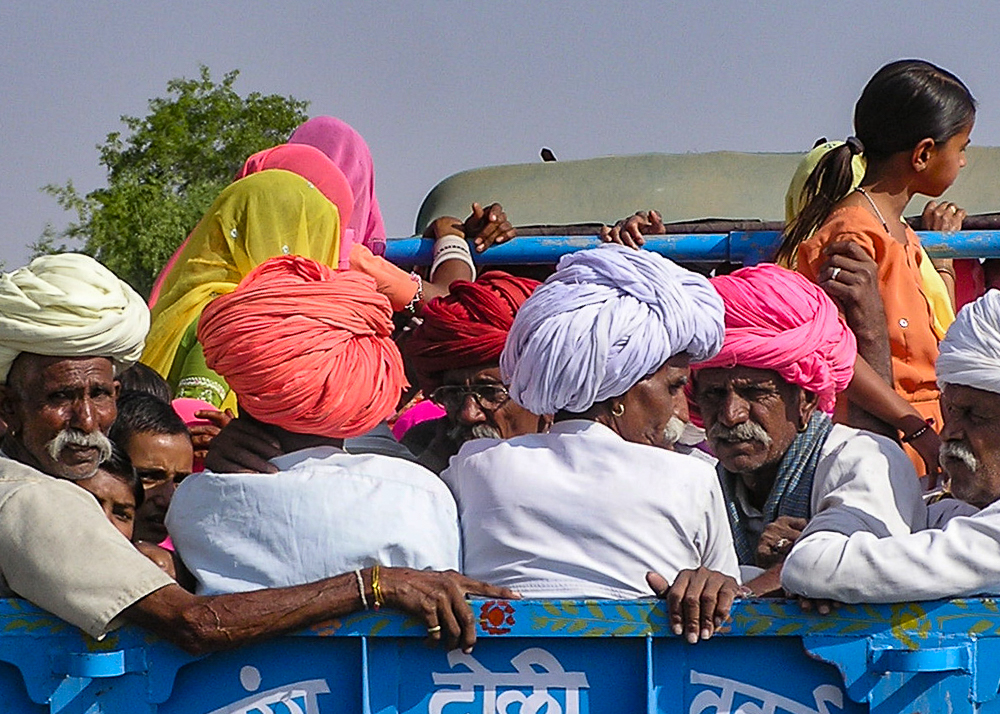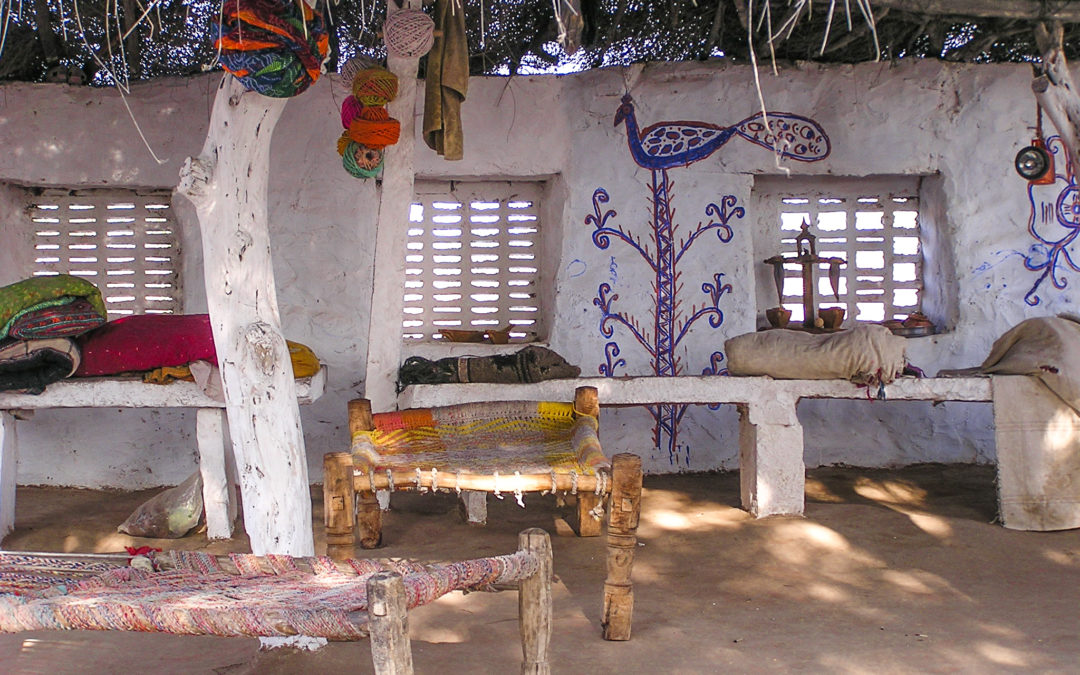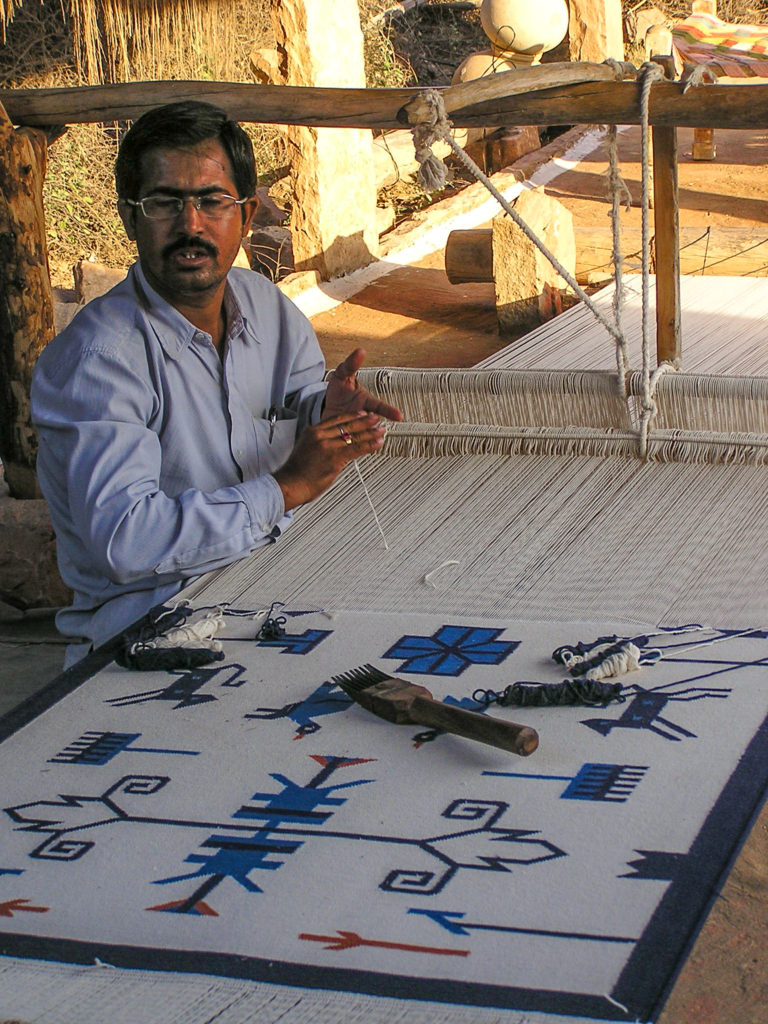
Our continued exploration of Rajastan began one morning past the deep ravines and several dams of the westerly range of the Aravalli Hills into a wide fertile valley with early morning activity everywhere: the man with the sleep-eyed the-cow-must-go-out-again-before-my-tea look on his face; school children lining up for buses or running to catch up with each other on the walk; brightly clad women gathering dried hay into horizontal bundles too large to embrace, wrapping them in a length of twine and putting them on their heads to walk to feed the cattle; sugar cane and the last of the grains being cut; the man gesticulating wildly with his hands while driving with his knee and holding the cell phone to his ear; the 20+ cherubic little girl faces smushed into the cab of a ton and a half truck getting a free ride to school. Through village after village we meandered with the periodic face-to-hood-ornament standoff with a water buffalo or herd of cows.
We went up and over the last of the Aravalli Range and landed smack into “monument valley” and the southern Utah look of random rock formations quickly progressing into a scrubby desert complete with small cacti and scraggly tumbleweeds. Along the way we studied turbans and head wraps and the landscape transition from fertile to more arid. From cows to goats to none, hay to drying dung to firewood bundles, chickens and cows to buffalos on farms – all evidence of the changes in climate toward the high desert dunes.

As we approached the city of Jodhpur, we passed durry rug dealers and textile outlets and the fancy NRI villages. That’s “non-resident Indians” who must own property to retain dual citizenship but have western housing standards. The outskirts of many cities are littered with incongruous condo units that generally sit empty unless a worthy family member is in residence protecting limited contents.
A Russian-made version of a C141 flew close overhead alerting us to the largest Indian airbase in the country as the 20thc Umaid Bhiwan Palace domes loomed across the dusty haze. We checked in to another exquisite heritage hotel – the Agit Bhiwan Palace – the first in the country to have been converted to a hotel – and made our afternoon arrangements. An overpriced, luxurious lunch at the Umaid Bhiwan complete with a wander around this active residence was followed by an energetic jeep safari into the desert. (Note: recommend you make reservations for lunch and dress up for the Umaid Bhiwan. You can stay there but I think I’d have needed a completely different and dressier wardrobe to walk around for dinner and “sightseeing”. If you’re travelling light, plan accordingly.)

The “blue city” of Jodhpur, India
There’s a quote by Herman Melville on a banner in Delhi airport which struck me as apropos: “It is not visible in any map: tru places never are.” Yep. Nice.
If you’d like to know more about India or just connect with questions, check us out at www.facebook.com/SueHendersonPhotography/. We’re always interested in your comments and sharing what we’ve learned along the roads of life.



























